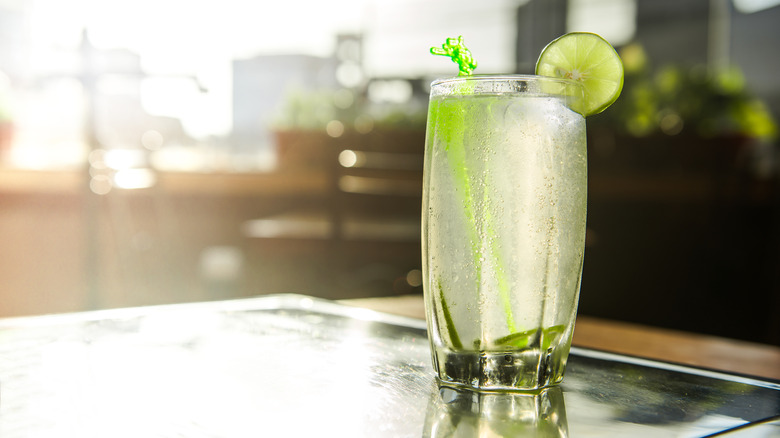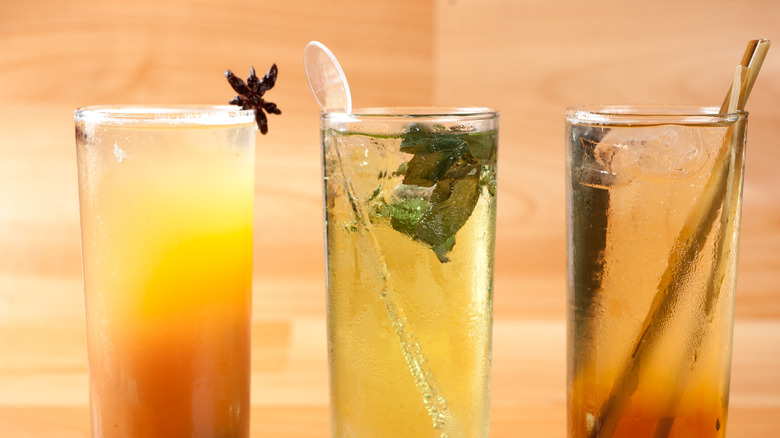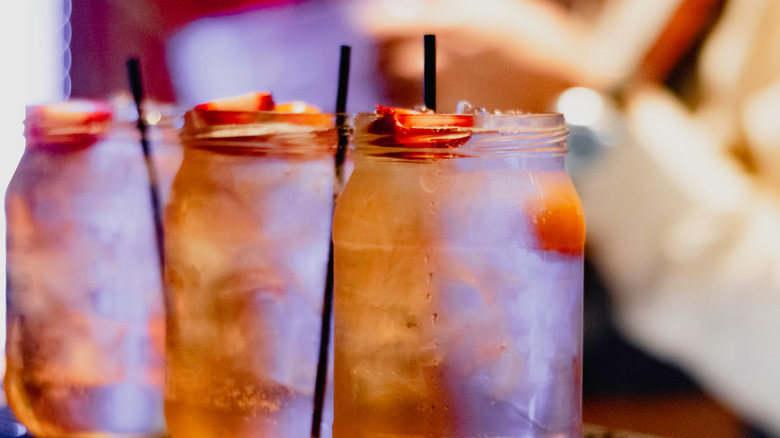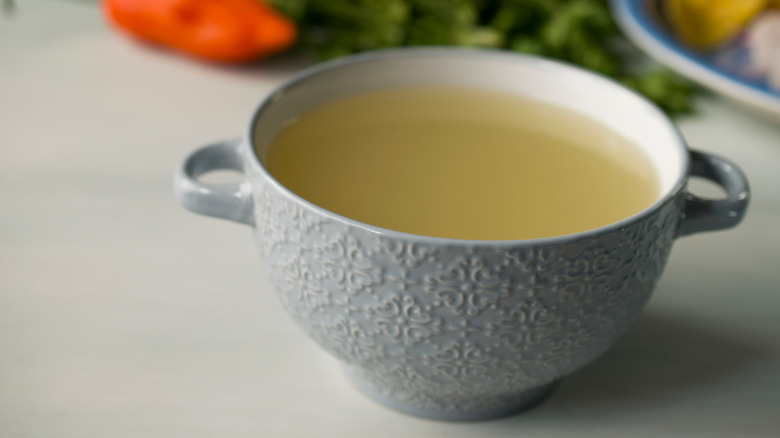The Refreshing Peruvian Cocktail Named After Fish Soup
If you're planning a trip to Peru or find yourself on holiday in South America, most guidebooks will recommend ordering the infamous pisco sour, a frothy, silky beverage made with pisco, Angostura bitters, egg whites, simple syrup, and citrus. Pisco can pack a punch, and when shaken with ice, the libation can be fairly easy to put down. Yet understandably so, not everyone is enthusiastic about downing raw egg whites as part of their late-night revelries.
Enter the pisco chilcano. "If you go to a party in Peru, this is what people will be drinking," mixologist Fiorella Larrea explained to Punch. Light and golden in color, chilcano cocktails are made with similar ingredients as the pisco sour, minus the egg whites and syrup. And yes, the drink shares the same name as a local fish stew with a similar hue, but there's nothing fishy about this drink. Step aside, pisco sours. You have serious competition.
History of the cocktail
Forbes notes there's no real invention story for the drink, but several claims point to Italian immigrants. When Italians first arrived in Peru, pisco sours weren't yet invented; instead, grappa from their homeland was the beverage of choice. When their grappa supplies eventually ran out, the Italians turned to pisco to fulfill their imbibing needs (per Punch).
Recipes to make basic chilcano cocktails parallel ingredients used in traditional Buongiorno cocktails: grappa, ginger ale, and lime (via Cocktail Party App). One key difference is that pisco is lighter than grappa and can easily be blended into drinks. Replace grappa with pisco, add ginger ale, lime juice, and Angostura bitters, and you have the chilcano.
"The Chilcano is definitely the most popular pisco drink in Peru, simply because it's so refreshing," bar manager Angie Alave Armas told Punch. The egg-free recipe has found favor with locals and tourists alike.
How to make a pisco chilcano
The pisco chilcano has gone through some iterations during its existence, with bartenders adding fruit flavors and spices to the original recipe or swapping Angostura for orange bitters (per Punch). The best part of making pisco chilcanos is that the recipe doesn't require much in the way of presentation: Ingredients don't need to be added, stirred, or shaken in any specific way; simply serve the drink in a tall glass. Compared to the demands of the more complex pisco sour, this is a bartender's dream.
If you want to get creative when making the party cocktail at home, Forbes recommends replacing ginger ale with ginger beer or flavored ginger ale to build texture within the drink. Bartenders use house-made syrup and swap ginger ale for sparkling water or add ingredients like fresh ginger or yuzu. Alternatively, experiment with the kind of soda used — lime or another flavor — to introduce an extra sparkle to the drink's foundation. Whatever experiments you conduct, be sure to choose the right pisco, warns Forbes, as the grapes used in the libation can either brighten or overpower the drink.
The soup by the same name
For those offensive mornings where you wake up having had a few too many the night before (we hear you), the traditional soup by the name of chilcano comes to the rescue. Made with fish broth, this protein-packed dish is known to bring even the most hungover human back to life. Cooked with herbs, vegetables, and detoxing citrus, this recipe can help absolve the previous day's debaucheries (via Querica Vida).
The tangy chilcano soup can be served either as a warm, welcoming comfort or as a type of appetizer, according to Gaby Mora. And even for those not suffering from raging hangovers, chilcano soup offers both health-boosting omega-3s and protein. Be warned, however; Peruvian Food estimates the dish can take a minimum of two and a half hours to prepare and cook. Which, we suppose, is more than plenty of time to serve up some more chilcano cocktails. Hair of the dog, anyone?



